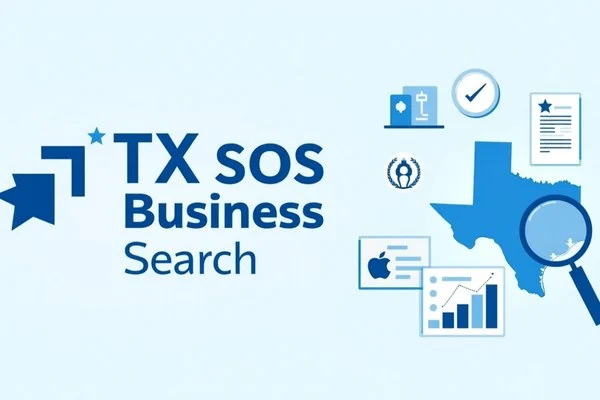In today’s digital landscape, social media is more than just a platform for sharing updates; it’s a powerful tool for businesses to connect with their audience, enhance brand visibility, and drive sales. However, simply having a social media presence isn’t enough. To truly harness the potential of these platforms, businesses must leverage social media analytics. This article will explore how to effectively use social media analytics to drive business growth, incorporating key metrics, tools, and strategies to optimize your marketing efforts.
Understanding Social Media Analytics
Social media analytics involves collecting and analyzing data from social media platforms to gain insights into user behavior, engagement, and overall performance. This data includes metrics such as likes, shares, comments, reach, impressions, and follower growth. By analyzing this information, businesses can uncover valuable insights about their audience’s preferences and behaviors, guiding their marketing strategies.
The Importance of Social Media Analytics
Social media analytics is crucial for several reasons:
- Informed Decision-Making
Analytics provide data-driven insights that help businesses make informed marketing decisions rather than relying on guesswork. For instance, if a particular type of post consistently receives high engagement, companies can prioritize similar content in their strategy.
- Understanding Your Audience
Analytics reveal who your audience is, including their demographics, interests, and engagement behaviors, allowing for tailored content. For example, a brand targeting millennials may focus on platforms like Instagram and TikTok, where younger audiences are more active.
- Measuring ROI
Tracking performance metrics helps businesses understand what’s working and what isn’t, enabling them to allocate resources effectively. By measuring the return on investment (ROI) of social media campaigns, businesses can justify their marketing budgets and make necessary adjustments.
- Identifying Trends
Social media analytics can help businesses spot emerging trends and shifts in consumer behavior, keeping them ahead of the competition. For example, if analytics show a rising interest in sustainability, brands can adapt their messaging to align with this trend.
- Enhancing Engagement
By analyzing engagement metrics, businesses can discover what types of content resonate most with their audience, leading to more effective marketing strategies. For instance, if video content receives higher engagement than static images, businesses can focus on creating more video content.
Key Metrics to Track
To effectively leverage social media analytics, focus on the following key metrics:
1. Engagement Rate
The engagement rate measures the level of interaction (likes, comments, shares) your content receives relative to your audience size. A high engagement rate indicates that your content resonates with your audience. For example, if you have 1,000 followers and a post receives 100 likes, your engagement rate is 10%.
Example: A fashion brand targeting younger audiences might post vibrant, trendy outfit photos on Instagram, which typically garners higher engagement compared to static product images. Additionally, brands can encourage engagement by asking questions in their posts or running contests.
2. Reach and Impressions
- Reach refers to the number of unique users who see your content, while impressions measure how many times your content is displayed. Tracking these metrics helps you understand your content’s visibility.
Example: If a post reaches 500 users but has 1,000 impressions, it means that some users saw the post multiple times. Understanding this can help brands assess the effectiveness of their content distribution strategies.
3. Follower Growth
Monitoring your follower count over time provides insights into your brand’s popularity and the effectiveness of your content strategy. A steady increase in followers often indicates appealing content.
Example: If a brand launches a new product and sees a spike in followers during the campaign, it suggests that the product resonated well with the audience.
4. Click-Through Rate (CTR)
CTR measures the percentage of users who click on a link in your post. A high CTR indicates that your content is compelling and encourages users to take action. For example, if 200 people click on a link out of 1,000 views, your CTR is 20%.
Example: A tech company might share a blog post about the latest gadget. If the post includes a clear call-to-action (CTA) like “Learn more about our new product,” it can significantly boost CTR.
5. Conversion Rate
This metric tracks the percentage of users who complete a desired action (such as making a purchase or signing up for a newsletter) after interacting with your social media content. For instance, if 50 out of 1,000 users who clicked on your post made a purchase, your conversion rate is 5%.
Example: An e-commerce brand might run a social media ad campaign offering a discount. By tracking the number of users who clicked on the ad and made a purchase, the brand can assess the campaign’s effectiveness.
6. Sentiment Analysis
Sentiment analysis involves analyzing the tone of comments and mentions to gauge public perception of your brand. Positive sentiment indicates strong brand loyalty, while negative sentiment may highlight areas for improvement.
Example: If a brand receives many positive comments about a new product launch, it can leverage this feedback in future marketing efforts. Conversely, if there are negative comments, the brand can address concerns directly to improve customer satisfaction.
Tips for Leveraging Social Media Analytics
Now that we understand the importance of social media analytics and the key metrics to track, let’s explore actionable tips for leveraging this data to drive business growth.
1. Set Clear Goals
Before diving into analytics, establish clear goals for your social media marketing efforts. Are you looking to increase brand awareness, drive website traffic, generate leads, or boost sales? Having specific, measurable goals will help you focus your analytics efforts.
Example: A company might set a goal to increase website traffic from social media by 30% over the next quarter. This goal can guide content creation and distribution strategies.
2. Choose the Right Tools
There are numerous social media analytics tools available, each offering different features. Some popular options include:
- Google Analytics: Tracks social media traffic and conversions.
- Hootsuite: Offers robust analytics features across multiple platforms.
- Sprout Social: Provides in-depth analytics and reporting features.
- Buffer: Allows tracking of post performance and engagement metrics.
Choose a tool that aligns with your business needs and provides the insights necessary to inform your marketing strategies.
3. Analyze Audience Demographics
Use social media analytics to analyze demographic data, such as age, gender, location, and interests. This information can help you tailor your content to meet your audience’s needs and preferences better.
Example: If analytics show that a significant portion of your audience is between the ages of 18 and 24, you might focus on creating content that appeals to younger consumers, such as trendy fashion items or tech gadgets.
4. Monitor Content Performance
Review the performance of your social media content regularly to identify what works and what doesn’t. Look for patterns in engagement, reach, and CTR to determine which types of content resonate most with your audience.
Example: If video content consistently outperforms image posts, consider increasing your video production efforts.
5. Test and Optimize
A/B testing is a powerful way to optimize your social media content. Experiment with different headlines, images, and posting times to see what drives the best results. Use analytics to track the performance of each variation.
Example: A brand might test two different headlines for the same post to see which one generates more clicks. By analyzing the results, the brand can refine its messaging for future posts.
6. Engage with Your Audience
Use analytics to identify which posts generate the most comments and interactions, and engage with your audience in those conversations. Responding to comments and messages builds relationships and encourages further engagement.
Example: If a post about a new product generates a lot of questions, take the time to respond to each comment. This not only builds rapport but also shows potential customers that you value their input.
7. Track Competitor Performance
Monitor your competitors’ performance using social media analytics. This can provide valuable insights into industry trends and best practices, helping you identify gaps in your strategy.
Example: If a competitor is successfully using influencer marketing, consider how you might incorporate similar strategies into your campaigns.
8. Create a Content Calendar
A content calendar helps you plan and organize your social media posts in advance. Use analytics to determine the best times to post and the types of content that perform well.
Example: If analytics show that posts made on Wednesdays at 3 PM receive the highest engagement, schedule your most important content for that time.
9. Leverage User-Generated Content
Encourage your audience to share their experiences with your products or services and feature their content on your social media channels. This not only boosts engagement but also fosters a sense of community.
Example: A travel brand might encourage customers to share their vacation photos using a specific hashtag. The brand can then repost these images, showcasing real customer experiences.
10. Measure ROI
Regularly measure the ROI of your social media marketing efforts. Use analytics to track conversions, sales, and other key performance indicators (KPIs) related to your goals.
Example: If a social media campaign generated $10,000 in sales from a $1,000 ad spend, the ROI would be 900%. This information can help justify future marketing budgets.
Advanced Strategies for Social Media Analytics
Once you’ve mastered the basics, consider implementing these advanced strategies:
1. Implement Social Listening
Monitor social media channels for mentions of your brand, competitors, and industry trends. This practice allows you to gain insights into customer sentiment and identify potential issues.
Example: If customers frequently mention a specific issue with a product, you can address it proactively, potentially preventing negative reviews.
2. Use Predictive Analytics
Leverage historical data to forecast future trends and behaviors. By analyzing past performance, you can identify patterns that may indicate how your audience will respond to future campaigns.
Example: If data shows that sales typically increase during the holiday season, you can prepare targeted campaigns in advance to capitalize on this trend.
3. Segment Your Audience
Divide your audience into smaller groups based on specific criteria, such as demographics or interests. This allows you to create more targeted content that resonates with each group.
Example: A fitness brand might segment its audience into categories like beginners, intermediate, and advanced users, tailoring content and product recommendations accordingly.
4. Integrate Social Media with Other Marketing Channels
Consider integrating social media analytics with other marketing channels, such as email marketing or content marketing, to gain a more comprehensive understanding of your audience.
Example: If a social media campaign drives traffic to a landing page, track how many of those visitors convert through email follow-ups. This can help you understand the entire customer journey.
5. Continuously Educate Yourself
Stay informed about the latest trends and best practices in social media analytics by following industry blogs, attending webinars, and participating in online courses.
Example: Websites like HubSpot, Social Media Examiner, and Buffer offer valuable resources and insights into the ever-evolving world of social media marketing.
Case Studies: Successful Use of Social Media Analytics
Case Study 1: Nike
Nike is a prime example of a brand that effectively uses social media analytics to drive engagement and sales. By analyzing user-generated content and engagement metrics, Nike has successfully launched campaigns that resonate with their audience. For instance, their “Just Do It” campaign encouraged users to share their fitness journeys on social media, which not only increased engagement but also fostered a sense of community among their customers.
Case Study 2: Starbucks
Starbucks utilizes social media analytics to understand customer preferences and tailor their marketing strategies accordingly. By analyzing engagement metrics and customer feedback, Starbucks has successfully launched seasonal drinks and promotions that align with customer interests. Their use of social media listening tools allows them to stay ahead of trends and respond to customer needs in real-time.
Case Study 3: Airbnb
Airbnb leverages social media analytics to enhance user experience and drive bookings. By analyzing user behavior and engagement on social media, Airbnb can identify popular destinations and tailor their marketing efforts to highlight these locations. Their “Live There” campaign encouraged users to share their travel experiences, which not only increased engagement but also provided valuable insights into customer preferences.
Challenges in Social Media Analytics
While social media analytics offers numerous benefits, businesses may face challenges in effectively utilizing this data:
1. Data Overload
With the vast amount of data generated on social media, businesses may struggle to identify which metrics are most relevant to their goals. It’s essential to focus on key performance indicators (KPIs) that align with your business objectives.
2. Rapidly Changing Algorithms
Social media platforms frequently update their algorithms, which can impact the visibility of your content. Staying informed about these changes and adapting your strategies accordingly is crucial for maintaining engagement.
3. Privacy Concerns
With increasing concerns about data privacy, businesses must navigate regulations and ensure they are collecting and using data ethically. Transparency with customers about data usage can help build trust.
4. Resource Allocation
Many businesses may lack the resources or expertise to analyze social media data effectively. Investing in training or hiring skilled professionals can help overcome this challenge.
Future Trends in Social Media Analytics
As social media continues to evolve, several trends are likely to shape the future of social media analytics:
1. Increased Use of AI and Machine Learning
Artificial intelligence (AI) and machine learning will play a significant role in social media analytics, enabling businesses to analyze data more efficiently and gain deeper insights into customer behavior.
2. Enhanced Personalization
As consumers increasingly expect personalized experiences, businesses will need to leverage social media analytics to deliver tailored content and recommendations based on individual preferences.
3. Integration of Augmented Reality (AR)
With the rise of AR technology, businesses may use social media analytics to track user interactions with AR content, providing valuable insights into customer engagement and preferences.
4. Greater Focus on Video Content
As video content continues to dominate social media, businesses will need to analyze engagement metrics specific to video to optimize their strategies and drive results.
5. Emphasis on Social Commerce
As social media platforms increasingly integrate e-commerce features, businesses will need to track metrics related to social commerce to understand how social media influences purchasing decisions.
Conclusion
In a world where social media plays a pivotal role in business growth, leveraging social media analytics is essential for success. By understanding your audience, monitoring content performance, and making data-driven decisions, you can enhance your marketing strategies and drive meaningful results.
Remember, social media analytics is not a one-time effort; it requires ongoing monitoring and optimization. By continuously analyzing your data and adapting your strategies, you can stay ahead of the competition and achieve your business goals.
For more insights on leveraging technology for business growth, explore our other articles on Business Tech View.









